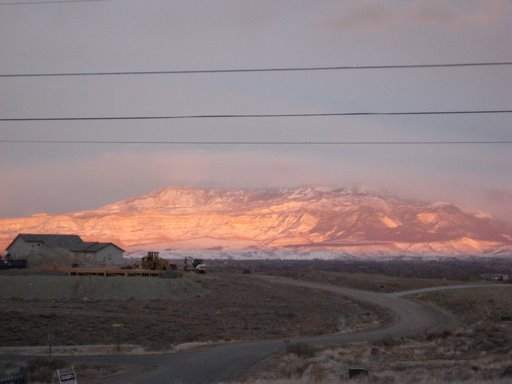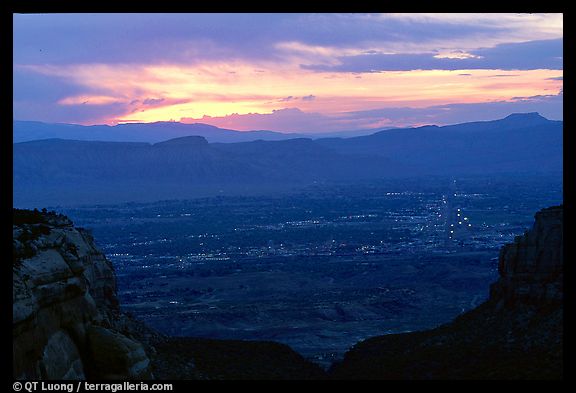The myths of solar debunked: Part 1
JULY, 7 2011
HEIDI IHRKE
HIGH NOON SOLAR
569 S. WESTGATE DR. #4
GRAND JUNCTION, CO 81505
WWW.HIGHNOONSOLAR.COM
970-241-0209
There are a lot of myths that surround the solar industry. Part of this is because it is a variable technology that has been used to power everything from construction warning signs to space stations to Walmart. Plus, the industry has a long history surrounding tax incentives, rebates, feed in tariffs and, sometimes, the lack of all of these. Today, I hope to put some of the myths surrounding solar to rest.
MYTH #1 You need to have batteries if you want a solar system.
This one used to be true, back in the day, so its no wonder people still hold it as fact. That said, it is still a myth with today's solar applications. Cabins, boats, RVs and the like used to be the main reason people got a solar system. Wherever utility lines didn't run but power was needed, solar was the solution. These battery systems are called ‘off grid' applications. Solar panels charge batteries and you have power for cloudy days and nighttime. They are still relevant systems, as long as grid power isn't currently available. However, if your home or business is already getting power from ‘the grid,' you don't need to go ‘off grid' to reap the rewards of solar. Solar systems with the utility grid already in place is called ‘grid tie.' Grid tie uses no batteries. None. Solar produces electricity that's used in the home and, if it's more than what the home needs, it turns the utility meter backwards. This excess power gets saved in the utility grid for rainy days and nights, when solar doesn't produce. After a year of this give and take, putting extra solar into the grid, then taking it back out when you need it, can produce a year -end electricity usage from the power company of zero.
MYTH #2 It has to be a perfectly clear day for solar to work.
Solar panels certainly work better when its sunny out but they also work better when it's cold out, just like any electronics. The prime condition for a solar panel to perform in is a cold, sunny, winter day in the high elevations. You can't get much better than that. That said, we have 3 other seasons and many places where solar is installed that is at sea level and maybe doesn't ever see winter. Solar panels produce power even in lower light conditions, such as cloudy weather and early morning. Some panels are actually designed to work better in these hot or low-light conditions, such as the SunPower brand solar panels, which incorporates a patented design called Maxeon Technology. This technology translates as less efficiency lost every day due to heat or cloudy conditions, meaning more power actually gets made using the same size panel as a comparable, less efficient model. The high heat situation is especially important for Grand Junction applications, where the summer days are long and hot.
MYTH #3 Solar could never work in a place like Minnesota.
First, review the last myth we just talked about. Second, Germany has the same solar radiation access as Alaska but has installed more solar than all of the United States. In Minnesota, the design simply incorporates more ways to shed snow and higher tilt angle due to latitude. Otherwise, it cranks away nicely there.
MYTH #4 Solar is ugly.
I could make the argument here that gas wells and coal mining looks ugly too, it's just not found in your backyard as often. However, I agree that a lot of solar systems that used to be installed and, unfortunately, still do get installed by some contractors, certainly do look ugly. This is the fault of the contractor rather than the product, though. Solar panels can easily be flush mounted to east, south or west roofs (south being the most efficient) and don't have to be picked up at funny angles to work. Solar can even be used in dual purpose applications, such as a carport (you may have seen FCI Constructor's new solar carport on I-70B Loop recently) or as an awning. Some solar panels, such as SunPower panels, are all black to be more aesthetically pleasing and easier to integrate with roofs.
MYTH #5 Some Homeowners Associations (HOAs) don't allow solar.
Colorado's solar access laws, which date back to 1979, prohibit any residential covenants that restrict solar access. HB 1270 of 2008 extended the law to protect installations of wind turbines that meet the state's interconnection standards, and certain energy-efficiency measures including awnings, shutters and other shade structures, garage fans, energy-efficient outdoor lighting, retractable clotheslines, and evaporative coolers. Some exceptions are made to allow for aesthetic requirements that do not significantly increase the cost of the device or decrease its performance.
http://www.gjfreepress.com/apps/pbcs.dll/article?AID=/20110707/COLUMNISTS/110709998&template=printart
Wednesday, July 27, 2011
Subscribe to:
Post Comments (Atom)





No comments:
Post a Comment